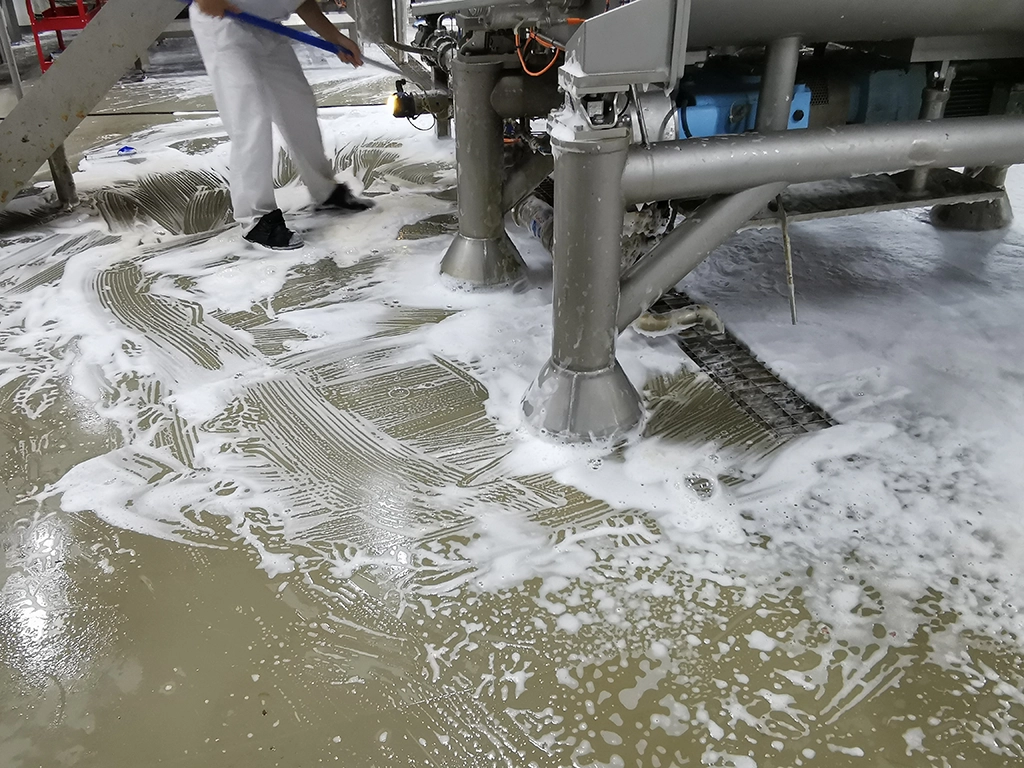FSNS Certification & Audit performs hundreds of food safety certification audits each year, including for SQF certification. We compiled a list of the top 10 reasons for an SQF audit non-conformity that our auditors see to help you prepare for your next audit.
We found that many non-conformities overlap. For example, a non-conformity for improper storage of chemicals is often associated with a non-conformity for improper cleaning or sanitation. This information can help you identify areas that tend to be overlooked so you can ensure your processes are ready to pass your next audit.
Below, we provide the SQF code (edition 9) clause and item for each of the top 10 non-conformities. Here’s the full list:
10) Document Control – 2.2.2.1
The methods and responsibility for maintaining document control and ensuring staff have access to current requirements and instructions shall be documented and implemented.
Current SQF System documents and amendments to documents shall be maintained.
Common Problems:
- Lack of identification for controlled documents.
- Incorrect revision date.
- Lack of reasons for revisions.
- Incorrect version of a controlled document in use.
Considerations:
- Who has access to edit controlled documents?
- What is the review and approval process? Does this include removing obsolete documents and verifying the accuracy of the log?
- Is a thorough verification process/internal audit in place?
9) Internal Audits – 2.5.4.1
The methods and responsibility for scheduling and conducting internal audits to verify the effectiveness of the SQF System shall be documented and implemented. Internal audits shall be conducted in full and at least annually. The methods applied shall ensure:
i. All applicable requirements of the SQF Food Safety Code: Food Manufacturing are audited per the SQF audit checklist or a similar tool;
ii. Objective evidence is recorded to verify compliance and/or non-compliance;
iii. Corrective and preventative actions of deficiencies identified during the internal audits are undertaken; and
iv. Audit results are communicated to relevant management personnel and staff responsible for implementing and verifying corrective and preventative actions.
Common Problems:
- Evidence of conformity not included in internal audit.
- Internal audits not performed at stated frequency.
- Corrective actions not available for non-conformities identified.
Considerations:
- Are internal auditors trained on the SQF internal auditor requirements?
- What processes are in place to review/approve internal audits?
Download our SQF Audit Checklists to help prepare for your audit. We have two checklists available, depending on your Food Sector Category:
SQF Audit Checklist for Food Sector Categories 10-22, 25, & 33

SQF Audit Checklist for Food Sector Categories 7-9

8) Temporary Repairs – 11.2.1.6
Temporary repairs, where required, shall not pose a food safety risk and shall be included in routine inspections (refer to 2.5.4.3) and the cleaning program. There shall be a plan in place to address the completion of temporary repairs to ensure they do not become permanent solutions.
Common Problems:
- Lack of documentation for temporary repairs made.
- Unauthorized temporary repairs.
Considerations:
- Are employees trained on what constitutes a temporary repair and how they should be handled? All employees?
- Are supervisors trained to continually monitor their areas for temporary repairs?
- Is management informed when temporary repairs are made? Every time?
7) Equipment Design and Construction – 11.1.7.2/9.1.7.2
Equipment and utensils shall be designed, constructed, installed, operated, and maintained to meet any applicable regulatory requirements and to not pose a contamination threat to products.
Common Problems:
- Damaged/rusted equipment.
- Equipment construction or repairs not easily cleanable (welds, stickers, modifications).
- Temporary repairs.
Considerations:
- Are sanitation and pre-op personnel trained on equipment condition expectations?
- Does post-maintenance inspection include an inspection for cleanability or damage?
- Is management informed when equipment modifications made?

6) Hazard Analysis – 2.4.3.7
Number six on the list of common SQF audit non-conformities involves incomplete hazard analyses for the HACCP/food safety flow diagrams. Number five on the list below is directly related.
The food safety team shall identify and document all food safety hazards that can reasonably be expected to occur at each step in the processes, including raw materials and other inputs.
Common Problems:
- Hazard analysis did not address each step in the flow diagram.
- Ingredient hazard analysis not completed.
Considerations:
- Who is involved in HACCP Reassessment? Is appropriate time devoted to a thorough review?
5) HACCP/Food Safety Plan Flow Diagram – 2.4.3.6
The food safety team shall develop and document a flow diagram covering the scope of each food safety plan. The flow diagram shall include every step in the process, all raw materials, packaging, service inputs (e.g., water, steam, gasses as applicable), scheduled process delays, and all process outputs including waste and rework. Each flow diagram shall be confirmed by the food safety team to cover all stages and hours of operation.
Common Problems:
- Flow charts missing required information, including introduction of processing aids and waste removal and rework.
Considerations:
- How often are flow diagrams reviewed? Who is involved in flow diagram review?

4) Records Maintenance – 2.2.3.2
Number four on our list of top 10 reasons for an SQF audit non-conformity has to do with recordkeeping.
All records shall be legible and confirmed by those undertaking monitoring activities that demonstrate inspections, analyses, and other essential activities that have been completed.
Common Problems:
- Forms (metal detector, receiving, master sanitation) not filled out, filled out incorrectly/missing information, mark-outs/white-out used.
Considerations:
- Is recordkeeping training provided to ALL personnel filling out records? How often is this done?
- Who reviews these records?
- Are records included in periodic internal audits?
3) Hazardous Chemicals and Toxic Substances – 9.6.4.1/11.6.4.1
Hazardous chemicals and toxic substances with the potential for food contamination shall be:
i. Clearly labeled, identifying and matching the contents of their containers;
ii. Included in a current register of all hazardous chemicals and toxic substances that are stored on-site; and
iii. Supplemented with current Safety Data Sheets (SDS) made available to all staff.
Common Problems:
- Chemicals not properly labelled.
- Chemicals not included on approved chemical list.
Considerations:
- Where are the secondary chemical containers coming from? Is there a process to issue these for use? Are people responsible for handling chemicals properly trained?
- Is chemical storage part of internal audits? Are maintenance staff trained on the importance of chemical storage procedures?
2) Walls, Ceilings, and Doors – 11.1.2.4
Walls, partitions, ceilings, and doors shall be of durable construction. Internal surfaces shall have an even and regular surface and be impervious with a light-colored finish and shall be kept clean (refer to 11.2.5).
Wall-to-wall and wall-to-floor junctions shall be designed to be easily cleaned and sealed to prevent the accumulation of food debris.
Common Problems:
- Rust on overheads.
- Peeling paint.
- Wall/floor junctions not properly sealed.
- Pipes passing through walls not sealed.
Considerations:
- Is there a process to verify the effectiveness of internal GMP audits?
- Are supervisors trained on expectations regarding facility condition?
- Are management personnel involved in auditing/verifying facility condition?

1) Cleaning and Sanitation – 9.2.5.1/11.2.5.1
The methods and responsibility for the effective cleaning of the food handling and processing equipment and environment and storage areas shall be documented and implemented. Consideration shall be given to:
i. What is to be cleaned;
ii. How it is to be cleaned;
iii. When it is to be cleaned;
iv. Who is responsible for the cleaning;
v. Validation of the cleaning procedures for food contact surfaces (including CIP);
vi. Methods used to confirm the correct concentrations of detergents and sanitizers; and
vii. The responsibility and methods used to verify the effectiveness of the cleaning and sanitation program.
Common Problems:
- Areas not properly cleaned during sanitation or master sanitation schedule inadequate/not followed.
- Titration kits expired or chemicals not being properly titrated.
Considerations:
- Are general staff and supervisors trained on cleanliness expectations? Is a reporting system in place?
- How are staff conducting pre-op inspections trained/verified?
- How often are management involved in pre-op inspections? Is the frequency adequate?
Unraveling the Top 10 Reasons for an SQF Audit Non-Conformity: Recap
Our exploration of the top 10 reasons for SQF audit non-conformity revealed significant overlaps, emphasizing the importance of systematic preparation and thorough documentation.
To navigate your next audit with confidence, heed these lessons, and continually invest in strengthening your food safety management system.
Reach out to our certification and audit experts with questions or to schedule your next SQF audit.



